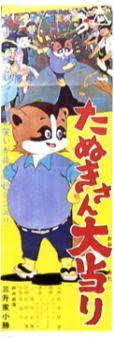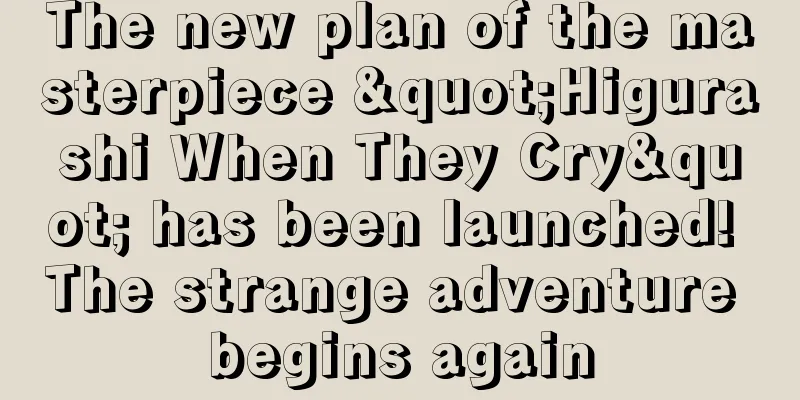Tanuki-san Big Hit - A deep review of the fascinating story and characters

"Tanuki-san Daiatari": The appeal and background of a classic Showa anime filmReleased on June 20, 1959, "Tanuki-san Daiatari" is an animated film produced by Toei Animation (now Toei Animation), and is still loved as one of the iconic works of the Showa era. The film features a humorous story with a raccoon dog as the main character and animation that made full use of the technology of the time, and was accepted by a wide range of people from children to adults. In this article, we will take a detailed look at the appeal and background of "Tanuki-san Daiatari," as well as introduce its evaluation and recommended points from a modern perspective. OverviewTanuki-san Daiatari is a rare theatrical release based on an original anime. It was released for a limited time from June 20, 1959 to January 1, 1960, and distributed by Toei. It only had one episode, and was directed by George M. Reed and Masao Kumakawa. It was produced by Toei Animation, and the main staff included Sanae Yamamoto (planning), Noriyuki Sakura (cinematography), Koichi Hattori (music), Takeshi Mori (sound recording), and the cast included Kokatsu Misouya, Ryu Fujiyama, Shoken Sawa, Kenji Todoroki, Goro Fukuchi, Midori Yamamoto, and Tomoko Tanaka. storyThe story of "Tanuki-san Daiatari" is a humorous tale of a raccoon dog named Tanuki-san who gets into all sorts of adventures and troubles. One day, Tanuki-san comes across a large sum of money by chance, and tries to use it to make his various dreams come true. However, in the process, he gets into trouble one after another and ultimately loses his money, but the story has a touching ending in which he discovers new values through the bonds and friendships he makes with the people around him. The story reflects the values and lifestyles of Japanese society at the time, and while it gives children dreams and hope, it also offers life lessons to adults. Animation Technology"Tanuki-san Daiatari" is a work that brings together the best of Japanese animation technology from the late 1950s, and its quality was very high for its time. In particular, the depiction of the raccoon dog's movements and expressions is very realistic, creating a strong visual impact. The background art is also detailed, faithfully recreating the Japanese scenery and culture of the time. These technical elements play a role in further enhancing the appeal of the work. Music and SoundThe music was composed by Hattori Koichi, whose compositions incorporate popular songs and jazz from the time to liven up the entire work. In particular, the light-hearted melody in the scene where Tanuki-san gets his hands on a large sum of money and the tense music in the scene where he gets into trouble skillfully bring out the emotions of the viewer. In addition, the techniques of Moritake, who was in charge of sound recording, realistically reproduce the voices of the characters and sound effects, enhancing the sense of realism of the work. characterThe characters in "Tanuki-san Daiatari" are unique, starting with Mr. Tanuki. Mr. Tanuki has a humorous and slightly cunning personality, but he also has a kind heart. He is surrounded by friends, family, and villains who cause all kinds of trouble, each of whom adds to the storyline. In particular, the characters of Mr. Tanuki's friend, the fox Kitsune-san, and the policeman who chases Mr. Tanuki, leave a strong impression on viewers. Social background and influenceThe year 1959, when "Tanuki-san Daiatari" was released, was the early days of Japan's high economic growth, and society as a whole was full of vitality. Against this backdrop, the story of a raccoon dog coming into possession of a large sum of money and using it to make his dreams come true reflects the dreams and hopes of people at the time. Furthermore, the fact that the film was accepted by a wide range of people, from children to adults, can be said to symbolize the values and lifestyles of Japanese society at the time. Furthermore, this work had a major impact on the development of Japan's animation industry. "Tanuki-san Daiatari," produced by Toei Animation, was the forerunner of later anime masterpieces such as "Astro Boy" and "The Jungle Emperor," and promoted the evolution of Japanese animation technology and storytelling. It was also highly acclaimed overseas, and was one of the catalysts that helped Japanese animation to spread around the world. A modern perspectiveFrom a modern perspective, "Tanuki-san Daiatari" is highly acclaimed as a masterpiece anime film of the Showa era. In particular, the humorous character of Tanuki-san and the animation that made full use of the technology of the time make it feel fresh even when viewed today. In addition, the universal themes and messages of the story resonate with and move modern audiences. On the other hand, some parts of the film reflect the social background and values of the time, which may seem a bit outdated to modern viewers. For example, the scene where Tanuki-san gets a lot of money and the scene where he gets into trouble may seem a bit exaggerated from a modern perspective. However, even with these elements, this is a work that has the appeal of being a classic Showa-era anime film. Recommended pointsThe reasons why we recommend "Tanuki-san Daiatari" are as follows:
summary"Tanuki-san Daiatari" is a classic anime film from the Showa era that continues to be loved to this day. The humorous raccoon dog character, the animation that makes full use of the technology of the time, and the universal themes and messages of the story move viewers. The music, sound, and social background and influences also add to the film's appeal. Some parts may seem a little dated to modern viewers, but even with these elements, it is a work that can be appreciated as a classic anime film from the Showa era. Please give it a watch. |
<<: The appeal and reviews of "The Fox Who Became King": An anime experience not to be missed
>>: "Tsuruhane" review: A moving story and beautiful visuals
Recommend
Monster Hunter Youko review: A fascinating story and deep characters
Monster Hunter Youko: Welcome to a world of fanta...
The Witcher Season 2 writing team announced many DC Marvel TV series crews
The second season of Netflix's "The Witc...
"Sensei no Ojikan" review: A touching story about a special time with a teacher
"Sensei no Ojikan": A hilarious school ...
In this world: Reevaluating the moving songs of everyone
"In This World" - The appeal of Minna n...
"Fast and Furious 10" officially started filming, the luxurious lineup returned
Recently, Vin Diesel posted on Instagram that the...
A thorough review of the original animation for "100 Days of Roses: Paws Without Honor"!
"100 Days of Roses: Paws Without Honor"...
"The Power of the Heart": An anime review that explores moving stories and profound themes
"The Power of the Heart" - The charm of...
The new movie version of "BanG Dream!" has been teased and will be released in January 2022
The popular next-generation girl band idol projec...
Nintendo to continue working with Illumination Entertainment on animated films
The animated film "Super Mario Bros. Movie&q...
"One Piece" 1000th episode commemorative live-action PV famous scenes integrated into life
Since its serialization on July 22, 1997, One Pie...
Lead actors share group photo, TV series "The Last of Us" enters production stage
Although there are not many successful examples o...
Animal protection organizations protest against the Korean drama "King Taejong Lee Bang-won" for abusing horses and deliberately tying ropes to throw horses
Horse falling is a common scene in costume dramas...
The appeal and reviews of Bibi & Birdie [kids' version]: A new standard for children's animation
The appeal and reviews of "Bibi and Birdie [...
POP UP PARADE Shion figure pre-order opens, official shipment in September
Recently, GSC POP UP PARADE Shion figure has been...
"Detective Chinatown 3" box office exceeds 3 billion and becomes the lowest-rated movie in the "3 billion club"
The official Weibo account of Detective Chinatown...









